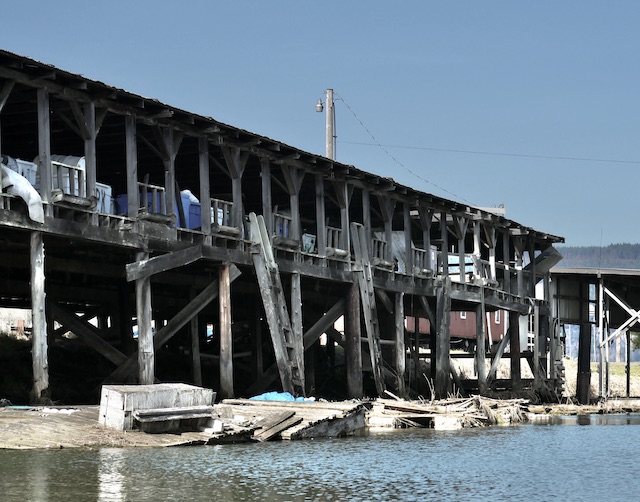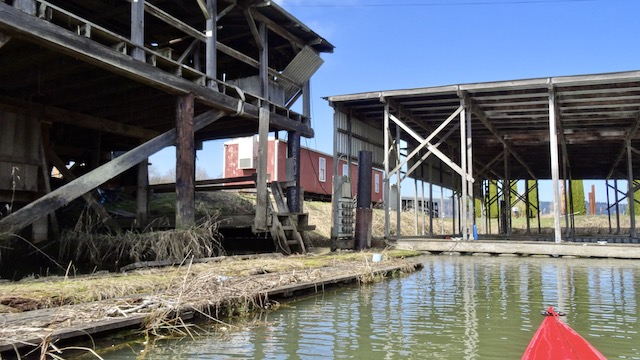Decisions, Decisions… a blogging tour
Here is a list I put together to help explore the Willapa Bay and its tributaries. It’s not the only one but reflects my abilities and preference to keep close to a shoreline. The Washington Water Trails Association also posts their list of thirteen Willapa Bay Water Trail Access Points here. Importantly, they offer a page of frequently asked questions about the Willapa Bay here. My modest expertise ends at the launch site where I have been known to drop my boat off the van (once). I don’t work for any of the many groups that study and preserve this area. I hope you get ideas for your adventures ahead on Willapa Bay and enjoy my posts of this region. This was updated July 2023 as South Bend repaired their city kayak dock to as it was before their big dock sank and Raymond replaced their kayak platform with a pull-by-paddle kayak dock identical to the one in Wheeler Oregon.

Working clockwise from Willapa Bay’s entrance to the Pacific Ocean, I am starting at this intersection located at the north end of Raymond. Turning west towards Grayland and Westport will take us to the most northern launch points onto the Willapa Bay on SR 105.

#1 Tokeland Marina From the intersection of US 101 and SR 105 in Raymond, drive 22 miles west. If you choose to launch from the marina you’ll find yourself on open water near the Pacific Ocean requiring a careful appraisal of the tide, weather, and your skills. Below is the ramp and a view towards the Willapa River.


The nearby Cedar River flows through a weir and tide gate into the Willapa Bay. Its entrance is a 7 mile round trip paddle from the Tokeland Marina. It requires a portage up a steep riprap beach and across SR 105. I enjoyed a 3.6 mile round trip paddle up to its shallows by driving to its mouth as written about in this post. Shown is the Cedar River’s gate to the bay and a view upstream.


#2 Smith Creek From the intersection of US 101 and State Route 105 in Raymond, drive west 10 miles and launch by the Smith Creek bridge. An undeveloped quiet 9 mile round trip written about here. Staying close to shore, with cautious planning for the weather and tide, it’s a 7 mile one way trip to the Tokeland Marina, South Bend or the beach below the Bruceport Campground.


#2 Smith Creek The access to North River is a 500 foot paddle from the adjacent Smith Creek. I paddled a quiet 13.2 mile round trip past floating cabins and the occasional recreational fishing boat as posted here.


#3 Wilson Creek. At the intersection of US 101 Hwy. and SR 105 at Raymond, drive east on Monohon Landing Road 4 miles up the Willapa River. From here you can paddle up or downstream towards the Willapa Bay 11.5 miles away through Raymond and South Bend with over 25 miles of the Willapa River’s forks and sloughs to explore as partly shown here.


#4 Raymond Riverfront Park. Next to Willapa Paddle Adventures, the Willapa Seaport Museum and the NW Carriage Museum is a hand carry dock with an added easy kayak launch. The Willapa River forks here giving you three major routes some which are shown here. Below is a view of the dock, the nearby lumber mill and swing bridge.


#5 Helen Davis Memorial Park is on the Willapa River at the west end of South Bend. From here it is a 5 mile round trip to Willapa Bay and a 9 mile round trip to Raymond as shown here. Dock repairs to the hand carry kayak dock adjacent to the Elixir Coffee Shop were completed in 2023.


#6 The Bone River Natural Area Preserve No facilities, limited parking and a steep muddy hand launch at lower tides offers a 5 mile round trip that’s historical and protected from development. Launching from nearby Bay Center would make this a 13+ mile round trip as I did here.


#7 Bay Center From the marina’s dredged ramp you can paddle upstream to the Niawiakum River and/or the Palix River delta. Shown below is the ramp and Goose point Oysters at the entrance to the Niawiakum River.


#8 Palix and Canon Rivers Accesses the three forks of the Palix River and the Canon River through the meadows and forests as written about here. Located 1/3 mile south of the US 101 bridge over the Palix River.


#9 Naselle Launching onto the Naselle River at Naselle you can paddle upstream or downstream through pastures and forests before reaching Willapa Bay 12 miles away as I’ve done here.


#10 The 101 bridge over the Naselle River has parking above a path down to the river which can be seen further in these posts: https://southwestwashingtonpaddletrips.wordpress.com/2017/06/19/naselle-river-mouth/
Shown below is the lot and the nearby Ellsworth Slough.


#11 Willapa National Wildlife Refuge Ramp provides access across to Long Island, with campsites north and on its west side. A collection of posts crossing to the island to hike the trails around the old growth cedars can be found here.


The Willapa National Wildlife Refuge Headquarters has moved from here southwest across the bay adjacent to the Dohman Creek launch.
#12 Dohman Creek provides access to Willapa Bay’s southern salt marsh and the Tarlett Slough. This launch opened within the Riekkola Unit late 2018. Turn east off Sandridge Road at 67th Place and drive 2.3 miles to a restroom and parking lot. Below is a picture of the launch and Tarlett Slough as written about here.


#13 Port of Peninsula at Nahcotta: Is located 12 miles north of the intersection of Highway 101 and Sandridge Road at Seaview. From here you can see the the local oyster industry and waterfront homes. Two miles east is the northern end of Long Island, a crossing that is unforgiving to poor planning and may leave you stranded until the tide returns. I’ve written about it here.


Bonus: Posts of Accessible Lakes and Canals on the LB Peninsula
From the north at Surfside and continuing south there is Surfside canal & Seabreeze Lake and Loomis Lake,


Island Lake and Black Lake.


These are collected from my collection of posts that features the Columbia River west of Longview, the Oregon coast from Wheeler north to Ocean Shores Washington.
A guide book is available in several shops, by mail or on Kindle and is available here.


































